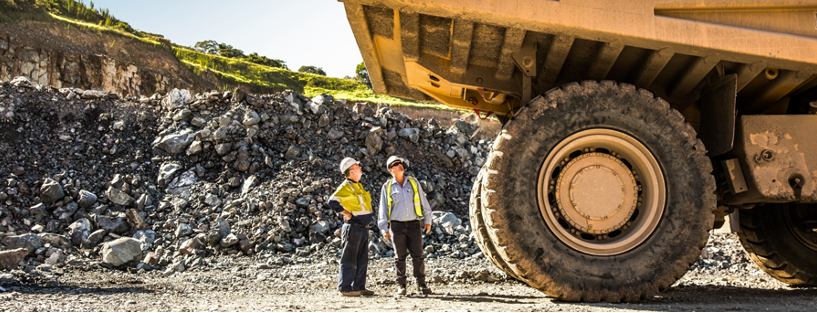- I replaced my $3,500 Sony camera with a 200MP Android phone - and can't go back
- 6 things I did immediately after installing iOS 18.5 on my iPhone - and why you should too
- My favorite 3-in-1 MagSafe charger for travel is smaller than a cookie (and it's on sale)
- 8 ways Google's Gemini AI assistant is getting more powerful and helpful
- Coffee with the Council Podcast: Introducing the New India-South Asia Regional Engagement Board
Workforce Transition in the Mining Industry

Trend Overview
Today’s mining industry is on the edge of a big change in their workforce. Approximately 25% of mining employees are over the age of 55. This signals a
major employee transition in the near future. So what are mining companies doing about this workforce transition and how can technology play a role in these transitions?
In 2022 the World Economic Forum identified that mining companies are leveraging this transition for growth by introducing new job roles and phasing out redundancies. Here are three major areas of transition they identified.
Increased Digitization
The top response of mining companies was to continue leaning into the digitization of more measurement points and personnel activities. As more instrumentation moves online, there is less need for data entry clerks. As software manages more of the information flow, the administrative roles of bookkeepers, accountants, clerks and secretaries become less critical.
With this shift, there will be an increased requirement for process automation specialists, remote sensing technologists, and software developers. These new requirements are well aligned with the roles new employees are trained for and the shift will slowly de-emphasize the traditional roles that are more common to the aging employee base.
Big Data Analytics
Data volume is increasing exponentially with the increase in digitization. Pulling more value out of this data for energy management, predictive maintenance,and operations dashboards becomes an imperative. This new world of electronic data reduces the need for material-recording clerks and stock-keeping clerks. It shifts the need for financial analysts into a broader domain of management or organizational analysts.
More Automation
The automation that mining has leveraged in control systems is now growing into other areas of automation. Tools like autonomous and tele-remote vehicles, drones, robots and the control of production parameters with machine learning and artificial intelligence are just a few possiblities.
This expanded automation domain also results in shifted employee roles from manual labourers and drivers to AI or machine learning specialists and robotics engineers.
Industry Point of View
Cisco’s software tools and communication infrastructure are at the heart of all these new growth areas. Here are three ways Cisco helps with the workforce transition from traditional mining roles to the new roles.
Digital Knowledge Capture
Today’s high bandwidth wireless infrastructure makes it possible to take video cameras and mobile devices anywhere in the mine to not only document incidents and work results, but also capture training footage of experienced miners demostrating their optimized way of doing things. This video can be instantly tagged to assets in the asset management database for easy access by new workers.
New workers already use YouTube videos to inform DIY projects at home. Extending that motion of consulting videos for pertinent training at work, is natural for new employees.
Modern Tools and Infrastructure
YouTube is just one example of modern tools that are second nature to new employees. Having real time access to mobile HMI’s, project management systems, service management platforms and ERP systems, all from their mobile devices is both a convenient and natural way of operating for new employees.
Inclusive Collaboration
At Cisco, our collaboration engineering teams have taken great care to make the ease of access and participation in Webex a core tenant in product design. On one hand, a new employee may join a meeting from a phone in the far reaches of a mine, while an experienced miner may walk into a room where a video unit connects to the same meeting without any configuration or searching through menu options. These two scenarios connect people of very different backgrounds and experience. They are able to communicate effectively in the same meeting, in a way that works for each of them individually.
Conclusion
Cisco serves a wide range of technology and human experience. The workforce transition in today’s mining industry will result in more technology diversity and more people diversity. That diversity requires a wide range of experiences from Cisco. The Cisco team looks forward to helping our energy customers navigate this challenging time with new opportunities.
YouTube video for Workforce Transition in the Mining Industry
Share:

